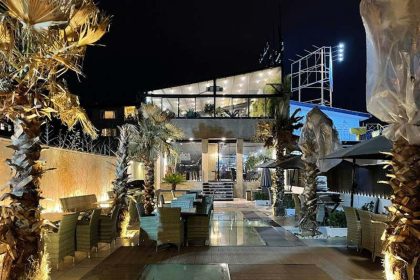Beautiful and colorful Christmas decorations, from traditional hangings to modern styles, remind of family memories and deep bonds of generations in many countries.
The Christmas tree and its decoration during the New Year holidays are among the most popular family traditions around the world. This ritual has deep roots in history and different cultures and is celebrated annually with great enthusiasm. Each of these decorations, in addition to beauty, is a symbol of common beliefs and memories of families and has a special meaning for each person.
The roots of Christmas decorations go back to ancient traditions that started in Germany and gradually spread throughout Europe and America. Today, this tradition is used with a combination of modern creations; From simple and symbolic balls to advanced and personalized decorations that express the different interests and styles of each family. For many people, hanging these decorations is an opportunity to return to the beautiful memories of the past and at the same time deepen their family ties.
Each of the Christmas decorations and its long history reminds of the cultural and religious heritage in different parts of the world; A legacy that families preserve from generation to generation and pass on to the next generations.
Learn about the history of Christmas decorations:
Christmas tree
The idea of decorating the Christmas tree started in Germany; Where people used to add fruit and nuts to the trees after the leaves fall to symbolize hope for the coming spring. In 1605 AD, they brought the pine tree into the house and decorated it with paper flowers, candles, nuts and fruits; The incident left a great impression and after that, the idea of decorating the tree was popularized inside the house and then spread throughout Germany.
Photo source: recollections; Name of the photographer: unknown
German immigrants in the 19th century (1800s) brought this tradition to America, and the people of this country also used available materials, such as fruits (especially apples), nuts, popcorn strings and cranberries, paper strings, candles and metal sheets, for used to make decorations; Innovative decorations that showed off the creativity of Americans.
The interesting point here is that people loved lighting the tree even before the invention of Christmas lights; Because often, small sheets of foil were hung on it to reflect the light in the room and make the tree shine.

Photo source: balsamhill; Name of the photographer: unknown
Traditional spherical ornaments
The round plastic balls that are used to decorate the Christmas tree also originate from Germany. A person named “Hans Greiner” in the 1800s started making glass balls called “baubles”, which became the first decorations produced for Christmas. At the end of the 19th century, a person called “F. W. Woolworth” (FW Woolworth), brought this idea to America and in the year, more than 25 million dollars of these spheres were sold.
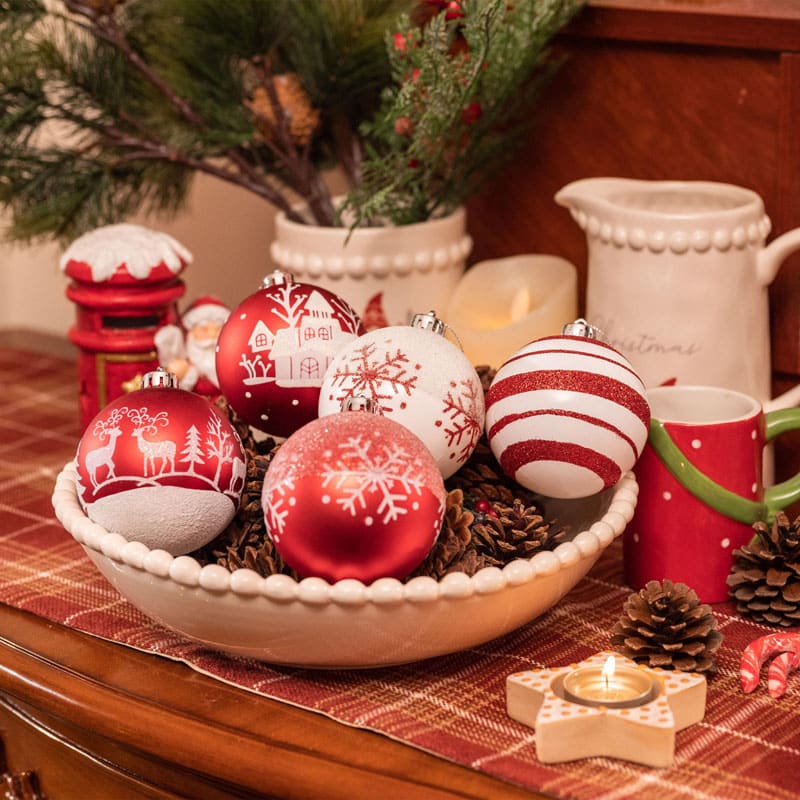
Photo source: wayfair —Ball; Name of the photographer: unknown
Eventually, manufacturers began to use injection molding (injecting molten material into a mold) with plastic materials, which allowed for various shapes and sizes of ornaments. The round shape of these decorations is also inspired by the fruits and nuts that were used to decorate the trees in the past.
Christmas star
The Christmas star, which is usually hung on the top of the tree and on the branches, has a religious origin. According to the story of the birth of Jesus (pbuh) in Bethlehem, three wise men saw an unusual star in the sky, followed it and reached the place of his birth, and then, gifts such as gold, fragrant incense and myrrh (a type of natural turpentine) ) brought In fact, the star used on the Christmas tree today is a symbol of this historical star. Sometimes, these three people are called “three kings”; But these wise men, contrary to popular belief, were not kings; Rather, they are remembered as great and respected astronomers who followed the patterns of the stars.
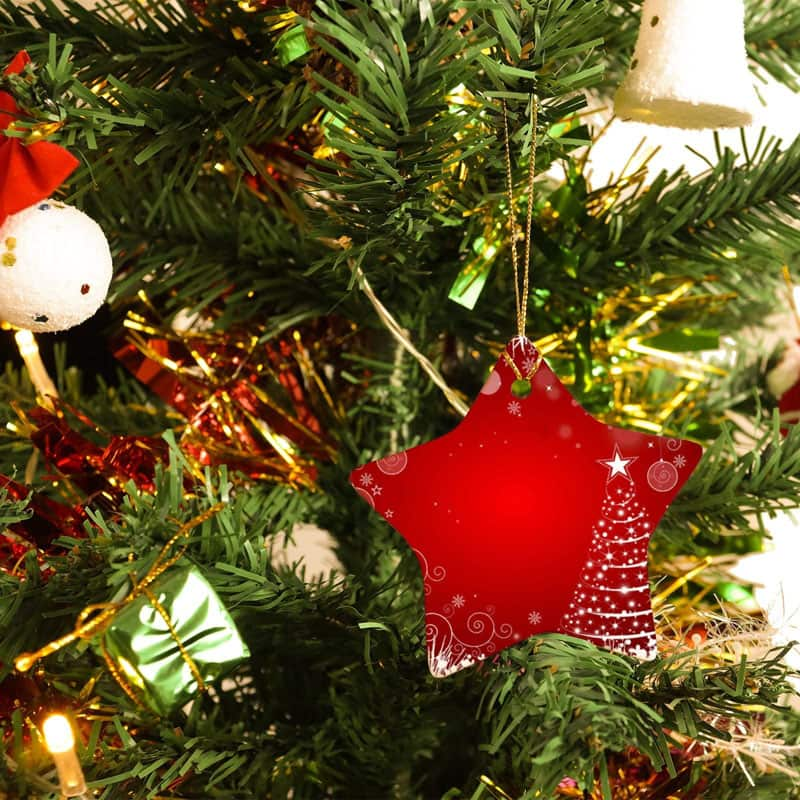
Photo source: amazingchristmas; Name of the photographer: unknown
Candy canes
Candy canes are popular Christmas decorations that are placed on trees and in stockings. These candies were designed to help keep children quiet during Christmas. The origin of this tradition also reaches Germany and was created around 1670 AD. The shape of “J” (J) like this candy is the symbol of the staff of the shepherds who met Jesus (PBUH) when he was born.
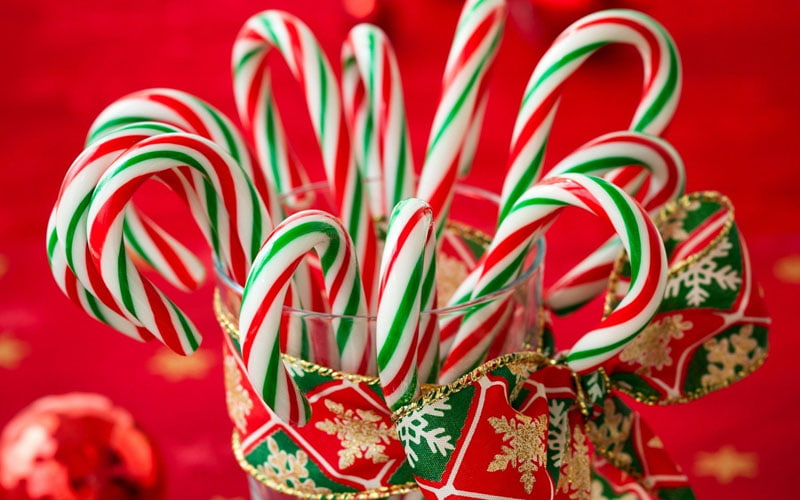
Photo source: stbenedictstable; Name of the photographer: unknown
Around 1900 AD, red stripes and mint flavor were added to these candies. Some Christians believe that the red stripes are a symbol of the blood that Jesus shed on the cross and the taste of mint is a symbol of the plant that was used to purify the Bible. This is while the early candies were simple sugar sticks without taste or color.
the angels
The beautiful and ornamental angels that many people use to decorate the top of the Christmas tree or hang among other decorations also have religious connotations. These angels can be a symbol of the angel who appeared in Bethlehem to announce the birth of Jesus (pbuh); Or the angel “Gabriel” who announced the birth of Jesus (PBUH) to Maryam and may even be a symbol of the guardian angels who watch over humans.
It is said that after the popularity of the Christmas tree, parents decorated it with ornamental ribbons and told their children that these ribbons were strands of angel hair stuck in the branches of the tree.
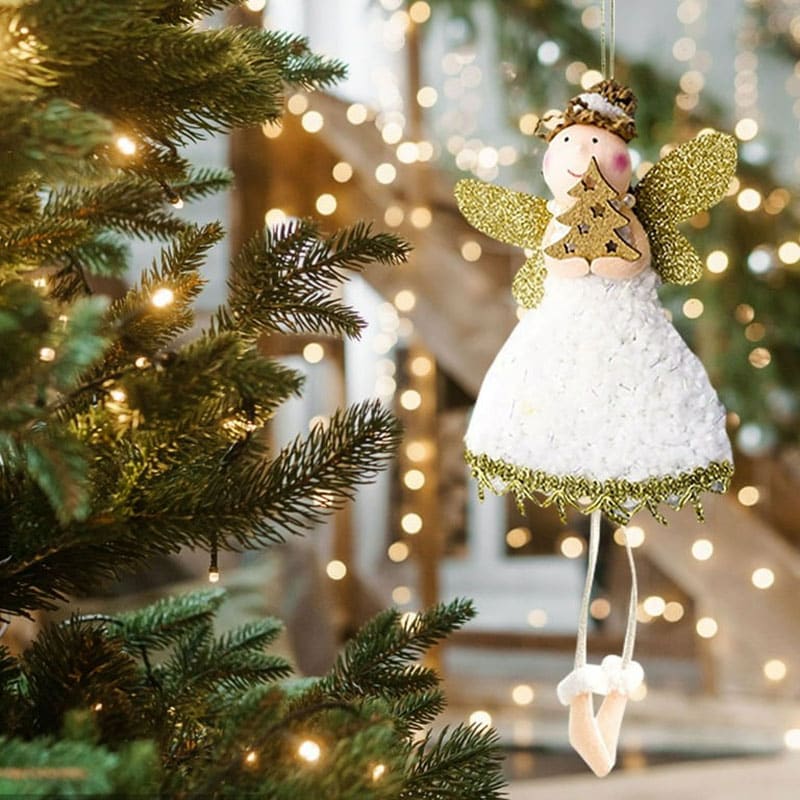
photo source: walmartimages; Name of the photographer: unknown
Christmas pickles
Pickled Christmas cucumber is one of the strangest traditions and decorations of this celebration, which emerged in the late 19th century with the aim of creating entertainment for children. Parents, after buying a glass pickled cucumber, would hide it between the branches of the tree and ask the children to look for it; The first person to find the glass pickle would receive an extra gift.
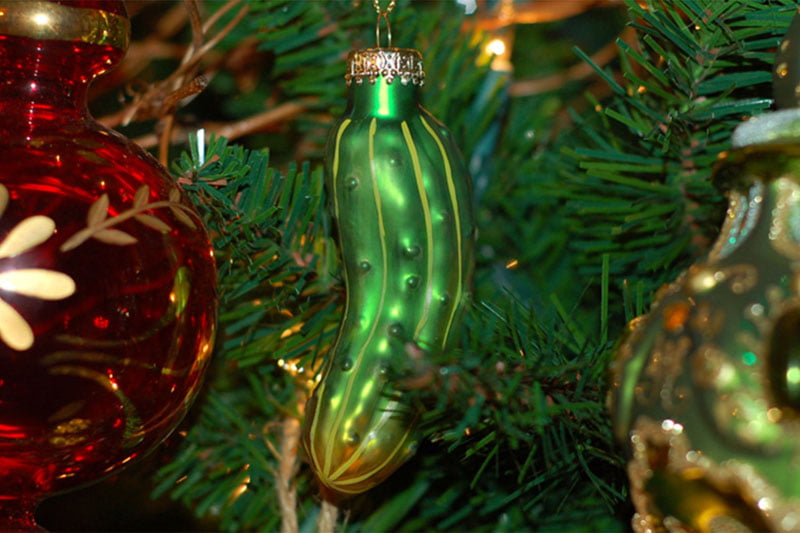
Photo source: famousinreal.life; Name of the photographer: unknown
According to some people, this tradition also has its roots in Germany; But the Germans claim they have never heard of it. Therefore, it is believed that this was the idea of a creative seller to sell more Christmas decorations.
Personal Christmas decorations
Nowadays, Christmas tree decorations are related to the personal taste and interests of each family. For example, some families use decorations they have collected as souvenirs during their travels as a visual symbol of their collective memories. be
Others feature custom decorations with special dates, such as anniversaries and birthdays, as well as decorations related to personal interests such as sports, movie characters, music, hobbies, favorite colors, and more.
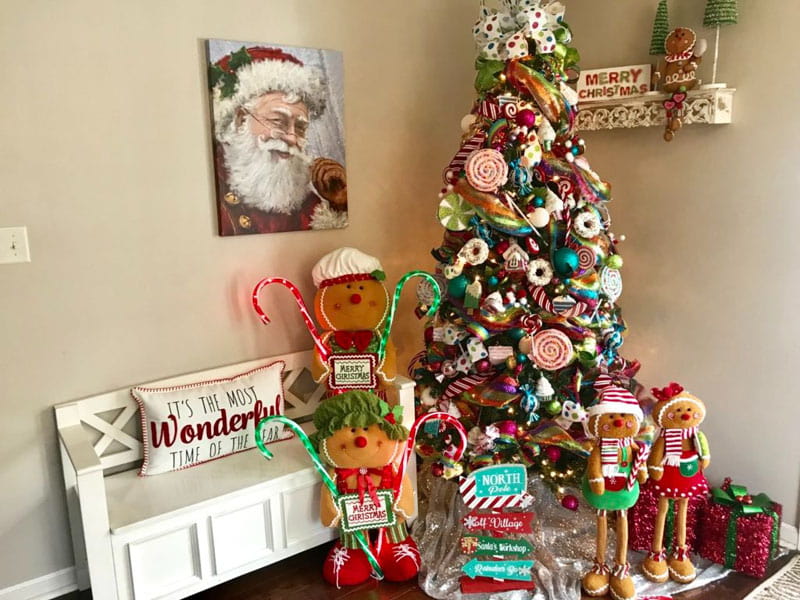
photo source: gracemonroehome; Name of the photographer: unknown
Christmas trees with different themes are relatively new ways of celebrating Christmas that are rapidly gaining popularity.
Beach-themed trees (including seashells and starfish), nostalgic-looking trees (including mercury glass and pastel colors), movie-themed trees (movie characters and icons), and rustic trees (including pine trees and woodland animals), among these decorations They are thematic.
All these decorations are designed to reflect the special interests and tastes of each family.
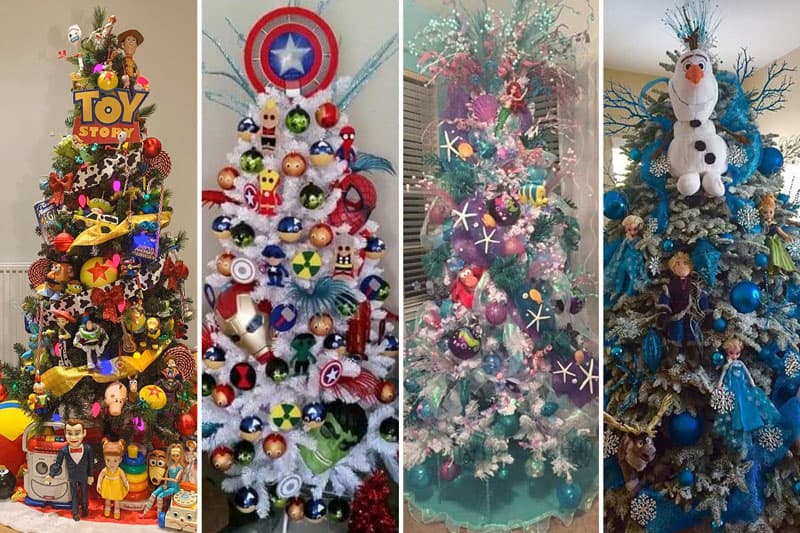
Photo source: thesun.ie; Name of the photographer: unknown
What do you know about the history of Christmas tree decorations? Have you ever thought about the meaning behind each of the Christmas decorations? Please share your valuable opinion with us and other Kojaro companions.
Cover photo source: work-tops; Name of the photographer: unknown
Frequently asked questions
What materials were used to make the first Christmas tree decorations?
The first Christmas tree decorations, with fruits, nuts, and colored paper, began in Germany after the fall of the autumn leaves to symbolize hope for the return of spring and abundance.
Where did the root of Christmas candy come from?
The origin of candy canes goes to Germany and the shape of “J” (J) like this candy is also a symbol of the staff of the shepherds who met Jesus (PBUH) when he was born.
RCO NEWS














